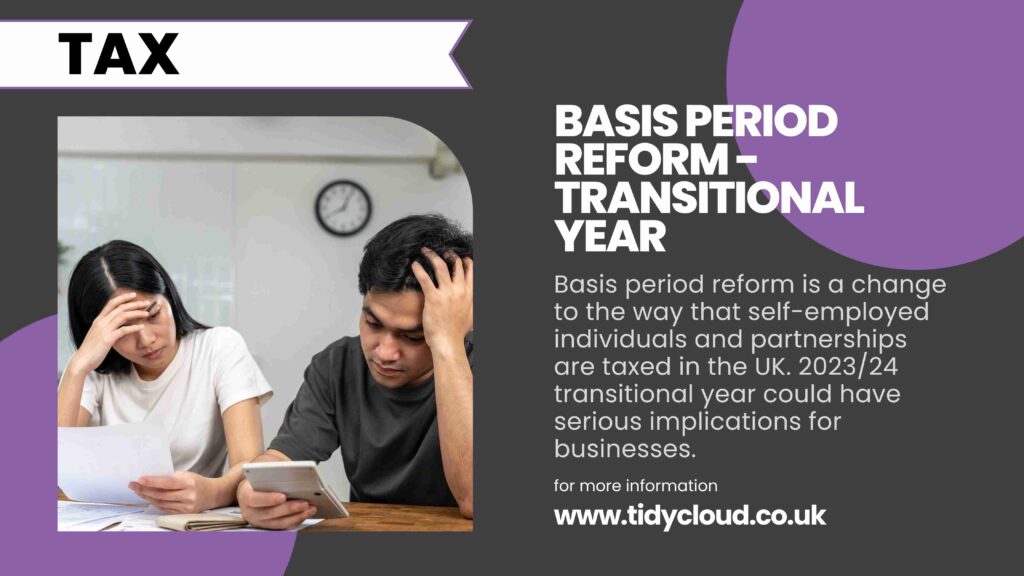Watch out for Transitional Year taxes
Basis period reform is a change to the way that self-employed individuals and partnerships are taxed in the UK. Under the current rules, businesses are taxed on the profits of their accounting period, which can be any 12-month period.
E.g. A business could have a year-end of 30th June which would mean they are taxed each year on their profits between 1st July and 30th June of the following year.
Basis period reform will change this by aligning the basis period for tax purposes with the tax year. This means that all businesses will be taxed on the profits of the 12 months from 6 April to 5 April, regardless of their accounting period.
Basis period reform will be introduced in two phases. The first phase will start in the 2023/24 tax year. This is called the Transitional Year.
It is this year which could have serious implications for self-employed individuals and partnerships who do not have a 31st March/5th April year end.
The reason for this is that businesses will be taxable on their profits on the current year basis (i.e. for the 12 months to their accounting date in 2023/24, plus the period up to the end of the tax year (i.e. 31 March for simple apportionment)
For example, a business with a 30th June 2023 year end, they would be taxed on
- Their 12 months profits between 1st July 2022 and 30th June 2023; And
- The 9 months profits between 1st July 2023 and 31st March 2024
This would mean that they are taxed on 21 months’ worth of income in that one tax year which could increase their tax liability significantly.
Due to the likelihood of increased tax liabilities, HMRC have introduced an optional relief of spreading these excess profits over 5 years. This would inflate the businesses income by 1/5th of the excess period over each of the 5 years including 2023/24.
Example
Sandy Brown runs a small shop and has a year-end of 30th June. Her profits for YE 30th June 2023 are £48,000 and she expects her profits for YE 30th June 2024 to be similar.
In the 2023/24 tax year, she would be taxed on
- £48,000 to 30th June 2023; And
- 9/12ths of £48,000 to 30th June 2024
This means her total income for 2023/24 is £84,000. This is £36,000 more than she would normally be taxed on and means she has been pushed into the 40% tax band.
She could claim any overlap profits that she generated in her first-year trading against this liability, however like many small businesses, she made losses in her first year of trading so she has no relief available to claim.
Her options in 2023/24 would be to either
- Pay the taxes on the £84,000; Or
- Opt to spread the £36,000 of excess profits over 5 years. This would mean her income for each year from 2023/24 onward would be £7,200 higher than otherwise. In 2023/24, her taxable income would be £55,200 (£48,000 + £7,200 first year of spreading).
Want to learn more about TidyCloud?
You'll find lots of helpful information in our information pack

